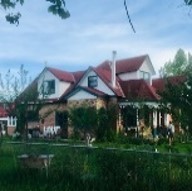85 N 7th St
Introduction
Author-Uploaded Audio
Listen to a narration of this entry's description by Carbondale Historical Society.
Text-to-speech Audio
Philip E. Weaver, originally from Pennsylvania, was the north end ranch owner who subdivided this land in the late 1800's. He had moved here with his family from Leadville. The home at 85 N 7th Street was most likely constructed in 1898 by Hugh Pattison, one of the town Blacksmiths. Hugh was 33 years old - his wife Flora and two daughters, Peach and Blanche, lived here. Next the home belonged to James & Ludocia Brown (he was a housepainter), and in 1933 to James & Isabella Legget, who were Scottish. He had a hotelkeeping background. James sold to George Garrison in the same year. Records show that in 1964 William Antonides sold to August & Elda (Cerise) Darien. The Cerises are one of the large ranching families in the valley, originally from Val d'Aosta, Italy; they settled here at the turn of Century. The Dariens had a family farm in El Jebel. Members of both families live in the Roaring Fork Valley to this day. Late Victorian details include decorative shingle infill at the gable ends and above the eave line, as well as scroll brackets that support the crown molding and extend along the porch lintel. Note that in the front entrance an early wood panel door has an arched light that retains its original waved glass. The assessors office records show this to be a wood framed house. At one time there was aluminum siding, and the brick veneer was probably added when the siding was removed in the 1980's or 90's. The large dormers were added, the front porch was altered, and a large rubble chimney was added, then removed.
Images

Backstory and Context
Text-to-speech Audio
Late Victorian
Sources
(Also known as 726 Colorado Ave.)
Town of Carbondale 2010 Architectural Survey (Reid Architects, Inc.)
Town of Carbondale 2019 Architectural Survey (Tatanka Historical Associates, Inc.)
carbondalegov.org
Carbondale Historical Society
